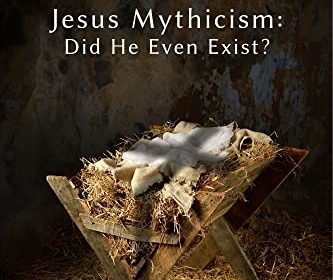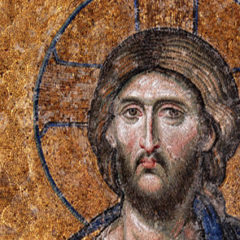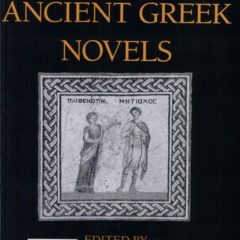Tim O’Neill & the Biblical History Skeptics on Mythicism (by Dr. Richard Carrier)
In April of this year the Biblical History Skeptics talked shop for three hours with Tim O’Neill (this Tim O’Neill) and I was invited to talk shop about that with Godless Engineer last month. The latter video has now gone live and you can watch it here. Following is a companion article reiterating and expanding on what we discuss in that video. So if you prefer starting with video discussions, you can go watch that, and come back here for the footnotes. Introduction & Summary Here I address the roughly half of that BHS video that criticized challenges to the historicity of Jesus, on which I completed a fan-funded postdoc research project and published the first peer reviewed book in nearly a hundred years (On the Historicity of Jesus), including an associated peer reviewed book on method (Proving History) and a collection of related peer reviewed journal articles (Hitler Homer Bible Christ). Godless Engineer and I will do a future video on the other half of theirs, which addressed questions in the history of science, the subject of my Columbia University dissertation—which I later adapted into two books (The Scientist in the Early Roman Empire and it’s more focused prequel Science Education in the Early Roman Empire). In general, though, throughout this three hour video I found Tim O’Neill not to be the raging, lying, ad-hominem-spewing crank he usually is. Instead he is polite and reasonable throughout, and merely wrong a lot, in a totally ordinary way. Half the things he and his hosts, Chris H. and Bryan G., say are still incorrect (and I include them all together as O’Neill only rarely corrects their mistakes). But only from incompetence and amateurism, rather than dishonesty. This interview also convinces me O’Neill is not a fake atheist or a crypto-Catholic as we have sometimes suspected. He’s definitely an atheist and a skeptic, and ultimately a sincere guy who just happens to be highly triggered by bullshit, and thus sees bullshit even where it isn’t. And I now think that’s what trips him up; that and his arrogance and bad temper, which when triggered can cause him to slip into lies and ad hominem—none of which you see in this video, because he’s among friends and thus never confronted with any of his mistakes. But mostly it appears O’Neill’s heart is in the right place: when he sees modern myths presented as facts by his fellow atheists, he rightly wants to call them out—but then too quickly buys into exactly the contrary myths. Which is very ironic, considering he actually points out the common folly of others doing that in this video. Yet he does that himself...
Bodily Resurrection in Ancient Fiction
We are looking at the gospel narratives in their literary-narrative context. First we saw a tale of an empty tomb; then we noticed several instances of innocent heroes surviving crucifixion, and now we see how viable the notion of a bodily resurrection from the dead was. By Neil Godfrey, Vridar.org Maybe you have sometimes heard a scholar declare that the very idea of a physical resurrection was unthinkable, certainly abhorrent, to people in the ancient Greco-Roman world. Well, that’s simply not so, as the following details from a late second century novel testify. The novel is Leucippe and Clitophon, by Achilles Tatius. The reader shares the view of the narrator witnessing the sacrificial death from afar off. (Heard that one before?) The body even becomes a sacrificial meal. We could in fact see brigands aplenty and fully armed standing on the opposite side of the trench. They had improvised an altar of earth and near it a coffin. Two of them were leading a girl to the altar with her hands tied behind her back. I couldn’t see who they were in their armor, but I did recognize that the maiden was Leukippe. They poured a libation over her head and led her around the altar to the accompaniment of a flute and a priest intoning what I guessed was an Egyptian hymn — at least, the movements of his mouth and the distention of his facial muscles suggested that he was chanting. Then at a signal they all moved far away from the altar. One of the attendants laid her on her back and tied her to stakes fixed in the ground, as sculptors picture Marsyas bound to the tree. He next raised a sword and plunged it into her heart and then sawed all the way down to her abdomen. Her viscera leaped out. The attendants pulled out her entrails and carried them in their hands over to the altar. When it was well done they carved the whole lot up, and all the bandits shared the meal. As each of these acts was performed, the soldiers and the general groaned aloud and averted their eyes from the sight. But I, contrary to all reason, just sat there staring. It was sheer shock: I was simply thunderstruck by the enormity of the calamity. Perhaps the myth of Niobe was no fiction after all: faced with the carnage of her children, she felt just as I did, and her emotional paralysis had given the appearance of petrifaction. When the ceremony was concluded, so far as I could tell, they placed her body in the coffin, covered it with a lid, razed the altar, and ran away...
Better Informed History for Atheists — Scholars assess the Two Jesus Parallels
By Neil Godfrey, Vridar.org A week ago James McGrath alerted readers to a new post by Tim O’Neill of History for Atheists commending it for its take down of “amalgam Jesus” theorists for supposedly uncritically and emotionally concocting excuses to disbelieve in a historical Jesus. It has taken me a week since that alert but I have finally caught up with O’Neill’s Jesus Mythicism 4: Jesus as an Amalgam of Many Figures. His primary target is one L. Aron Nelson a.k.a “Aron Ra” 9 whom he presents as someone bearing all the hallmarks of someone who has educated himself on the subject, without much idea of what is scholarly and credible and what is not. Scholarly discussion at XTalk (Crosstalk) on the parallels between Jesus ben Ananias and Jesus of Nazareth was active in 2003 and again in 2005. With that introduction we should expect to be informed of some of the scholarly responses to the ensuing arguments he critiques. (To avoid an over lengthy post I will focus on but one point in O’Neill’s essay and that will be his rebuttal of the claim that the Jesus of the gospels was to some extent based on Jesus of Ananias in Josephus’s account of the Jewish War, written some time between 74 and 79 CE. Other points can be addressed separately if warranted.) Despite O’Neill’s attempt to address one who in his eyes had not “much idea of what is scholarly” and “credible” in the eyes of scholars, O’Neill himself fails to indicate that he has any awareness of the relevant scholarly discussions, let alone that those scholarly discussions essentially undermine almost everything he writes. His own attempts at take-down arguments have gained no traction among scholars engaged with this particular question. In this post I will provide the evidence from scholars that they do find the parallels significant and worthy of serious discussion with some suggesting that one Jesus was indeed in part based on the other. Here is the Josephus passage with the key areas to be compared in red. The Whiston translation of Josephus’ War of the Jews (6.300-309) But, what is still more terrible, there was one Jesus, the son of Ananus, a plebeian and a husbandman, who, four years before the war began, and at a time when the city was in very great peace and prosperity, came to that feast whereon it is our custom for every one to make tabernacles to God in the temple, began on a sudden to cry aloud, “A voice from the east, a voice from the west, a voice from the four winds, a voice against Jerusalem and the holy house, a voice against the bridegrooms and...
Historicity Big and Small: How Historians Try to Rescue Jesus (by Richard Carrier)
When the question of the historicity of Jesus comes up in an honest professional context, we are not asking whether the Gospel Jesus existed. All non-fundamentalist scholars agree that that Jesus never did exist. Christian apologetics is pseudo-history. No different than defending Atlantis. Or Moroni. Or women descending from Adam’s rib. No. We aren’t interested in that. By Richard Carrier When it comes to Jesus, just as with anyone else, real history is about trying to figure out what, if anything, we can really know about the man depicted in the New Testament (his actual life and teachings), through untold layers of distortion and mythmaking; and what, if anything, we can know about his role in starting the Christian movement that spread after his death. Consequently, I will here disregard fundamentalists and apologists as having no honest part in this debate, any more than they do on evolution or cosmology or anything else they cannot be honest about even to themselves. Here I will summarize the best arguments for historicity and the logic behind the best case for it. And this only means mundane historicity; not the Gospel Jesus, but the Jesus of honest mainstream scholarship. I am most interested in finding out if I have left any good arguments out. So please add more in comments, if any you think remain that aren’t ridiculous and can be taken seriously by mainstream experts. Likewise if you think the logic of any argument I do present can be better formulated. The Honest Framework Of the experts who remain to be counted, two things are agreed by both sides of the debate: (1) we don’t really know how much of early Christianity actually comes from a historical Jesus (there are only diverse, contradictory, and unresolved opinions about this in the scholarly community); and (2) the cosmo-theological Jesus of the Epistles (wherein Jesus is a godman who lives in and speaks from heaven) and the mytho-heroic Jesus of the Gospels (where Jesus is more or less the central character in a set of parables about how each author believes good Christians should conduct themselves, made to issue statements supporting views the author wants his readers to regard as authoritative) is far more shibboleth than actual founder. And that remains the most likely fact of the matter no matter how historical this Jesus actually is; and regardless of what if anything he may have actually done to get the religion started. In its broadest sense, a shibboleth is a characteristic cultural touchstone by which insiders distinguish themselves from outsiders. Jesus was constructed by different authors (both inside and outside the canon) to represent their own (or their community’s) ideal of...
The Gospel of Mark As A Greek Tragedy (by Tim Claason)
It has been observed since the mid-20th century that the earliest Synoptic Gospel, Mark, follows the framework of Greco-Roman tragedy. The first attention I can find paid to this topic was in 1977, in Bilezikian’s The Liberated Gospel and some 24 years earlier in the same author’s doctoral dissertation. The pattern is quite clear: sparse dialog, frequent scene changes, narration, passion. I recommend Ken Humphreys’ Youtube video on this topic as an introduction. Picture this: you are a late 1st or early 2nd century mystery cult member. The mystery to which you belong, the Christian mystery, is more compatible with your worldview than other mysteries; those other mysteries (and their Demigods) lack the personal touch your mystery touts. You regularly meet with other members of your local mystery community, and you are aware of, by name or reputation, prominent members of surrounding communities. Many Christians are slaves…maybe you are too. The drudgery of life is interrupted by your daily morning routine of worshiping toward the sun. Amplifying your woes, if you’re caught, you’ll either be whipped, imprisoned or killed. Then the news comes! The most famous proprietor of this mystery — the man who saunters around the Eastern Roman empire sharing the Good News, with sheer disregard for his own tremendous risk — is coming to your town, in Bythnia in Roman Asia, the geographic space known today as central Turkey. This regional celebrity has developed his system well: he goes from town-to-town, with props, wardrobe changes, and a crew of about a half dozen others. In this sense, the celebrity is borrowing a well-developed trope within the mystery schools. Dramatic depictions were common in the mysteries. His most notable compatriot is an unexpectedly high-ranking woman in the mystery who simultaneously identifies as the archetypal mother and wife. She goes by multiple names, including Helen and Mary. The charismatic leader makes curious claims, such as remembering previous lives and experiences in higher realms (Against Heresies i.25.1, i.25.4, Galatians 4:19). He claims to have been born under odd circumstances, a miscarriage (1 Corinthians 15:7-8). He also claims to possess a special spirit (1 Corinthians 2:12) which gives him amplified power of proselytization. He usually brings a several-hundred word letter addressed to members of the community. At some point during his stay, with his band of co-conspirators (and some local community involvement), he enacts a dramatic depiction which culminates in the crucifixion of one of the featured players – not him, though. There is a feature in the play that did not translate to canonical paper. To the audience members, the point could not be clearer. A little past the midpoint of the play (Mark 9:35-40), one of...
History of Mythicism: Dupuis and Volney (by Rene Salm)
History of Mythicism: The French school of biblical rationalism Dupuis and Volney (by Rene Salm) Charles-Francois Dupuis (1742-1809) Man of letters, scientist and politician. Born in the Oise region, Dupuis was the son of a school teacher of modest means. His talents were precocious, particularly in geometry, which brought the lad to the attention of the Duc de la Rochefoucauld. Dupuis was granted a scholarship to the college of Harcourt, eventually received a diploma in theology and, in 1766, was appointed professor at the college of Lisieux in Paris. Dupuis was a polymath. He studied law in his spare time and passed the bar in 1770, abandoning theology. In 1778 he invented a proto-telegraph allowing him to communicate with a friend in the neighboring village. Astronomy was another of his interests. Dupuis’ knowledge of mythology led him to propose that the ancient divinities were none other than constellations, the names of gods being those of planets whose vicissitudes were simply movements in the heavens anciently expressed in metaphorical language. Frederick the Great became aware of Dupuis and wished to appoint him to the chair of literature at the University of Berlin, but the monarch’s death in 1786 intervened. Dupuis became professor of Latin elocution in 1787, a member of the Académie in 1788, and of the Institut de France in 1795. In 1792 Dupuis published l’Origine de tous les Cultes, ou la Religion universelle (“The origin of all religious worship”), which has been called “a veritable breviary of philosophical atheism.” The author sought to find the unity of religions in astronomical observations common to Egyptians, Greeks, and even Chinese. He considered Christianity to be “a fable with the same foundation as all the other solar religions.” For Dupuis, Christianity has “the character of the sun god, adored among all people under a plethora of names and with differing attributes.” In the French revolution Dupuis fled Paris for Évreux. He returned, however, and played a political role as delegate from the Seine-et-Oise. He was in the Convention as well as the Council of Five Hundred and distinguished himself by his moderation. He refused a post as Senator in order to dedicate himself to studies. In 1806, Dupuis was made Chevalier of the Legion of Honor. In 1806 Dupuis wrote his Mémoire explicatif du Zodiaque de Tentyra in which he sought to show that this particular zodiac coincided with an equinoctal point in the sign of Virgo, explaining the religion of fifteen thousand years ago. Dupuis died of a purulent fever at the age of 67. Constantin-François Volney (1757-1820) Philosopher, historian, orientalist, atheist, and politician. He was born at Craon, Anjou (today Mayenne) of...










